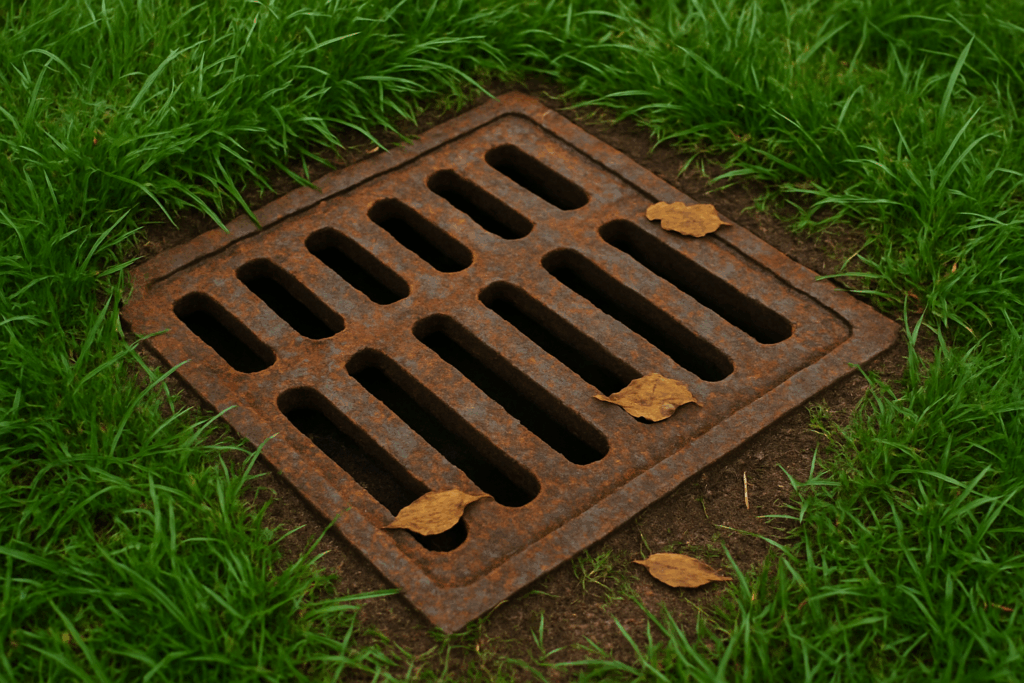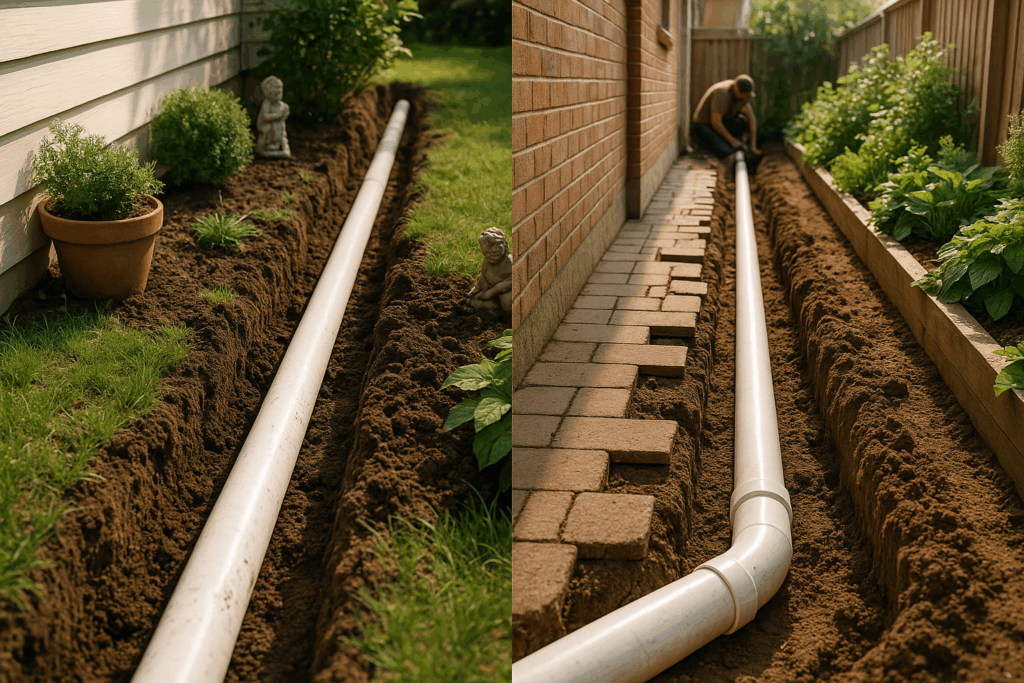
As the leaves change and cooler weather sets in, fall rain can quickly expose weaknesses in your yard’s drainage system. Without proper preparation, excess water can lead to standing puddles, soil erosion, foundation damage, and even basement leaks. A little planning now can save you from major headaches when heavy rains arrive. That’s why we’ve put together this comprehensive yard drainage checklist to help you get your property ready for the season ahead.
1. Inspect Your Yard for Problem Areas
Start by walking your property after a light rain to identify low spots, pooling areas, and signs of erosion. Pay close attention to:
- Low areas where water collects
- Bare patches where grass won’t grow
- Soil washed away near walkways or patios
- Mulch displacement around planting beds
Mark these problem spots so you can discuss solutions during a professional drainage assessment.
2. Check Gutters and Downspouts
Your gutters and downspouts are the first line of defense against water damage. Clogged gutters can overflow and direct water toward your foundation. Before fall rains intensify, make sure:
- All gutters are clear of leaves, twigs, and debris
- Downspouts extend at least 6 feet away from your home
- Gutter seams are sealed and leak-free
Consider installing gutter guards to reduce leaf buildup during the fall season.
3. Clear Drainage Grates and Inlets
If your yard has surface drains, grates, or catch basins, make sure they are clear of debris. Leaves can easily block these entry points, causing water to back up and overflow. A quick weekly check during fall can prevent clogs before they cause flooding.
4. Evaluate Your French Drain
French drains are designed to move water away from trouble spots, but they can lose efficiency if they become clogged with silt or organic material. Before the rainy season:
- Inspect any visible entry points to ensure they’re clear
- Look for slow drainage after rain
- Consider a professional flush if water flow is reduced
A clean, functional French drain is one of the best defenses against fall flooding.
5. Assess Yard Grading
Water should naturally flow away from your home, not toward it. Walk the perimeter of your property and check that soil slopes downward from your foundation. If you see water collecting near the base of your home, regrading may be necessary to redirect flow.

6. Install or Upgrade Drainage Solutions
If your property struggles with persistent water issues, it may be time to add or improve drainage systems such as:
- Catch Basins – To collect and redirect surface water from low-lying areas
- Channel Drains – Ideal for driveways, patios, or walkways that collect runoff
- Dry Wells – To absorb and disperse excess water underground
- Additional French Drains – For areas where surface water and groundwater converge
7. Protect Landscape Features
Heavy rains can wash away mulch, topsoil, and plants. To protect your landscaping:
- Use heavier mulch that’s less likely to float away
- Add edging to garden beds to keep soil in place
- Consider using ground cover plants to stabilize soil
8. Plan for Leaf Season
Falling leaves are a major cause of drainage blockages in the fall. Stay ahead of the problem by:
- Scheduling regular raking or leaf blowing
- Installing leaf guards on drains and inlets
- Clearing catch basins after each major storm
9. Schedule a Professional Drainage Inspection
While DIY checks are important, a professional assessment can identify hidden problems that might otherwise go unnoticed. An expert can test water flow, inspect underground systems, and recommend targeted solutions that match your yard’s unique needs.
Why Preparing in Fall Is Critical
Fall rains can be unpredictable—sometimes light and steady, other times heavy and fast. When your drainage system is already in top condition, it’s ready to handle both extremes. Waiting until a major storm hits could leave you scrambling for emergency repairs and dealing with preventable water damage.
Get Your Yard Ready Before the Rain Arrives
A few hours of preparation now can prevent weeks—or even months—of problems later. Whether you need minor maintenance or a major drainage upgrade, acting before the heaviest fall rains ensures your home and yard are protected.
Contact us today to schedule a fall drainage inspection and get your property ready for the rainy season.
